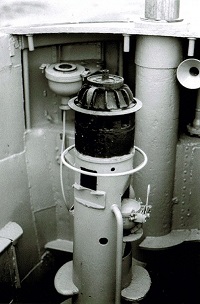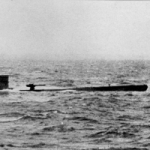When I revised my historical novel, Without Warning, I decided to start the book with the moment when a German submarine launches a torpedo at the British passenger liner Athenia. It is a short, critical scene on which the story will pivot and cause a life-and-death crisis for all the principal characters. I wanted to highlight this moment by showing the simple physical action taken by the submarine’s commander that creates the subsequent chaos.
There was, however, one big problem. I had no idea what the World War 2 commander of a U-boat did to fire a torpedo. Did he pull a lanyard? Push a button? Flip a switch? Did he even fire the torpedo, or did his command to “fire” tell another crew member to take some action that launched the torpedo? If I didn’t get this detail right, U-boat aficionados would raise concerns about the novel’s overall veracity.
This cannot be an uncommon problem for historical fiction authors. I imagine most have come to some point in their writing where they want describe a simple act or process to advance their story, but whatever it is they seek to depict was so commonplace at the time that most contemporary historians failed to note it.
To discover how to fire a torpedo on a German U-boat I began by searching the small reference library I had compiled, but my books were not detailed enough. Next I went to the Internet. The search criteria I entered into Google led me to many U-boat sites where I learned more than I needed to know about U-boat tactics for attacking convoys. I also gained new insights into the technology that calculated and relayed target information to a torpedo’s guidance system before it was launched. And there was a good deal of information about the torpedoes, which were ingenious devices that could change headings on the way to a target, maintain proper depth, and, depending on their setting, explode on contact or when detecting the presence of a metal hull.
It was all very interesting, but none of these sites described something as mundane as the controls for actually launching a torpedo.
I contacted an archivist at the Deutsches U-Boot Museum in Cuxhaven, Germany, with whom I had corresponded over the past three years. As usual, Peter was very helpful and offered three manuals that likely contained the information I needed. Unfortunately for me they were in German and I would need to have someone read and translate the relevant parts. It seemed like a lot of trouble for such a simple answer. I began to rethink my desire to include this detail in my novel’s opening sequence.
But Peter had one more suggestion – to look at Lothar-Günther Bucheim’s classic World War 2 submarine novel Das Boot; specifically the chapter titled “First Attack.” I had overlooked this fictional source in favor of a more “authoritative” answer in an official manual or history book.
Sure enough, on page 193 of my dog-eared paperback copy, was the clue I had been seeking. Bucheim describes the U-boat commander looking through his attack periscope with “his hand on the firing lever.”
Using the term “firing lever,” I began another Google search and found two references plus photographs. I was back in business thanks to the Internet and a helpful archivist (is there any other kind?). I had learned a lot of detail that would never specifically make it into my novel, but would make me a more informed writer. Perhaps most significantly was the fact that the critical clue had come from a highly-regarded historical novel, which underscored for me the importance of getting the details right.





I was surprised when another author recommended novels as research. What if that author wasn’t as concerned about authenticity? But they can point us in the right direction.
My first thought regarding firing U-boat torpedoes was the TV series Twelve O’Clock High, episode “The Decoy.” Of course, Hollywood isn’t too concerned with getting it right.